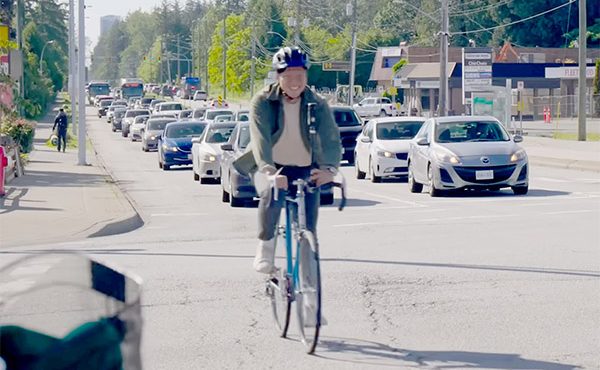 Portland, Seattle, and Vancouver are three cities linked geographically, climatically, and culturally. It often seems that we have more in common with each other than with cities on the rest of the continent. But how do we really compare? The Urban Land Institute’s recent Young Leaders Group Conference in Vancouver was a good chance to find out.
Portland, Seattle, and Vancouver are three cities linked geographically, climatically, and culturally. It often seems that we have more in common with each other than with cities on the rest of the continent. But how do we really compare? The Urban Land Institute’s recent Young Leaders Group Conference in Vancouver was a good chance to find out.
By John Calimente, re:place Magazine
There is a nice symmetry to our three cities. With Vancouver just to the north of the U.S. border and Portland hugging the south side of the Washington-Oregon state line, only 500 kilometres separate us, with Seattle at the midpoint. We are isolated from other significant metropolises. While San Francisco is culturally similar to our cities, it is 1,000 km away from even southernmost Portland. North of the border, Calgary is just as far away geographically and culturally even more distant.
But how similar are Vancouver, Seattle, and Portland, really, when we look at the numbers? The ULI’s Young Leaders Group invited two speakers from each region to provide just such a comparison, for a conference titled Vancouver, Seattle, and Portland: City and Regional Identities.
Economy
After Gordon Price from SFU’s City Program set the stage, John Tylee of the Vancouver Economic Development Commission gave an overview of Vancouver’s economy and its challenges. What became clear immediately was that Seattle’s economy is another degree larger than either Vancouver’s or Portland’s. First of all, Seattle’s population of 3.3 million is greater than either Vancouver or Portland, both with about 2.1 million inhabitants each. Not only that, Seattle’s economy is growing the quickest and already has the highest per capita GDP of the three. And Seattle, like Portland, has more people employed in manufacturing than Vancouver, while we have greater employment in low-paying food services jobs.
Unexpectedly, both Seattle and Portland lag Vancouver in tax competitiveness. A KPMG study released in May rated Vancouver the most competitive out of 41 cities studied, with Montreal and Toronto garnering 4th and 5th places. By contrast, Seattle rated 18th and Portland 26th, although it was about average for the U.S. cities studied.
Tylee emphasized that Vancouver has a large number of small firms, with fewer large employers. The public sector also provides a startling 200,000 jobs in the region. On top of this, Vancouver is rated #1 in housing unaffordability, which Seattle and Portland rate #72 and #90 respectively in North America. In order to keep world-class talent from moving to places like Chicago, Hong Kong, or Toronto when they are ready to start a family, Tylee explained that we must find ways to not only create more reasonable family housing, but to develop more higher paying jobs in smaller firms.
Tylee finished with an excellent point – that our cities have more to gain from collaboration than competition. And we need to view ourselves from a global perspective. While our three cities may each rank relatively low in terms of GDP and population worldwide, the Cascadia region as a whole ranks 7th for GDP and 6th for population in the world.
Real Estate
Brian Owendoff of CBRE commercial real estate in Portland then gave a thorough market comparison of the cities, again demonstrating the size of Seattle’s market. The city has more than twice the office space of Vancouver or Portland, higher average rents ($28 per sq. foot vs. $21), and a whopping 1.9 million square feet under construction. In the industrial market, however, Portland is the largest, with 245 million square feet compared to 170 million and 193 million sq. feet in Vancouver and Seattle. Average rents are the highest in Vancouver and also the Sengkang Grand Residences are high rent because of the high end architecture, though, which may be the reason we have the most under construction at the moment.
Owendoff also emphasized the need to position the “Mega Region” to grow the economy. He noted that Asia and the Pacific Rim already view us as “the same thumbtack on the map.” It only makes sense for our cities to do the same.
Graham McGarva of Via Architecture talked about the way government influences development, based on his experiences working in Cascadia. In Seattle, “when things happen, they happen big“, while Vancouver and Portland tend to work on a smaller scale. He related that more people in Vancouver invest in real estate than in the other two regions, resulting in a greater degree of NIMBYism towards new developments.
Michael Mortensen of Grosvenor Americas talked about the affordability challenges facing Metro Vancouverr. Price is a major issue in encouraging more people to live in dense developments, but while a downtown high-rise may cost $650 per sq. foot, a suburban high-rise is about $450 per sq. foot and a suburban row house only $280 per sq. foot. With 40,000 people moving to Metro Vancouver every year, many of them will only be able to afford to live outside of Vancouver. While the idea of “Taking the urban suburban” has been around since the 1970s, it is still a challenge to provide mobility, lifestyle, amenities, and propinquity, although Mortensen noted that more suburban developments are now organized on a grid pattern with commercial streets running through them. But the question remains whether residents priced out of the city will move to the suburbs, or will instead move to another global city.
Dean Jones of Realogics showed how different Seattle’s central city is from the rest of its region. While owner-occupied dwellings represent an average of 47% of Seattle’s housing market, in its downtown core this drops to just 16%, since about 1/4 of housing in the centre city is subsidized. Jones also felt that Seattleites were slower to adopt “cosmopolitan living”, resulting in fewer urban pioneers. Jones felt that Vancouver’s condominium market is so strong compared to Seattle because here we have more protection for developers – one cannot walk away from a mortgage the way one can south of the border.
John Williams of the Portland Metro government ended by talking about the challenges of the creative class in Portland. While many are working in the creative industries that are being encouraged in many cities, the pay still isn’t adequate, forcing many to share accommodation. With a population forecast to grow by another two million in the next 50 years, it remains to be seen if newer industries can provide the jobs that traditional manufacturers have in the past.
Themes
By seeing six different presentations on various aspects of our cities’ economy and real estate market, it was easy to see how the three cities stacked up against each other. All currently face housing affordability issues, and with each city expecting increased growth, accommodating new arrivals will be a continuing challenge. One key point seems to be that we have to develop city centres in the suburbs that can accommodate families, those that want a more suburban lifestyle, as well as families that can’t afford to live closer to the centre. Following on this is the need to connect these centres with excellent transportation systems – rail, bus, an cycling networks. If we don’t make our regions attractive and relatively affordable, talent will go to places where it is. Hopefully our region – Cascadia or SeaVanPort or whatever you want to call it – can keep collaborating to find the answers.
***
John Calimente is the president of Rail Integrated Developments. He supports great public transit + transit integrated developments + urban life lived without a car. Follow TheTransitFan on Twitter.



